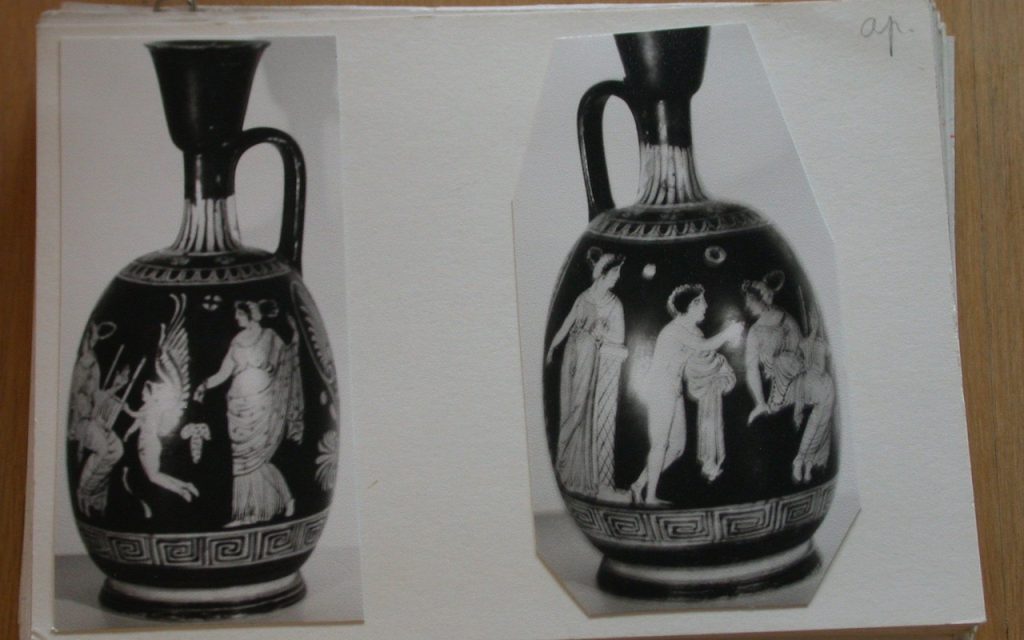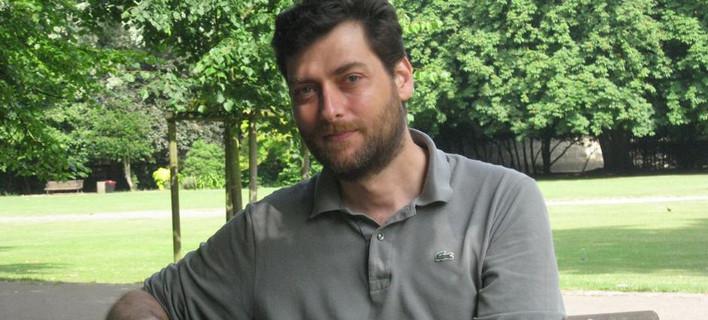Greek professor Dr. Christos Tsirogiannis, who has been previously profiled in Greek Reporter for his relentless pursuit of art thieves, has once again stopped what would have been another theft of a priceless piece of Greek history.
A Greek wine jug from 480 BC, which the archaeological expert had already advised Bonham’s auction house had been illegally trafficked by a convicted art thief, has now been withdrawn at the very last minute from the auction block.
Sold just ten years ago in London, the priceless jug was just about to be lost yet again on July 22, where it may have disappeared into the sometimes-shadowy world of high-priced art buyers.
Tsirogiannis, an associate professor at the Institute of Advanced Studies, University of Aarhus, in Denmark, had maintained in an interview with the Sunday Telegraph that “Bonhams had been notified at the time, and yet the object was sold.”
Giacomo Medici, one of the most notorious convicted art traffickers in the world, had been responsible for selling it a decade ago, according to Tsirogiannis, who had duly notified the British auction house of that fact, giving them photographic evidence. However, the jug was a hair’s breadth from being lost yet again — despite the desperate actions of the noted art expert.
Police in Germany, where the auction was to have taken place at the Gorny & Mosch auction house, have alerted Interpol and Italian authorities of the situation. Professor Tsirogiannis is responsible for the retraction of a total of four antiquities which were to have gone on the block this week. The antiquities expert handed over photographs of the objects while they were actually in the possession of known art traffickers.
Tsirogiannis had also recently spotted that Christie’s had suddenly withdrawn ancient antiquities from auction after he had gathered evidence which linked the four items – a Roman marble hare, a bronze Roman eagle and two Attic vases – to convicted traffickers in stolen artifacts.
Speaking to Greek Reporter at that time, Tsirogiannis denies he has become a thorn in the side of the lucrative global antiquities market.
“The responsibility of an archaeologist is not to go about attacking the major players in the market, but simply to notify the public about his research… It is not my responsibility to knock at the doors of Christie’s or Sotheby’s. If the truth is a thorn in their side, they have a responsibility to deal with it,” he states matter-of-factly.
“As an academic I am happy that my research has made an impact to the real world and helps various countries to claim and repatriate their own cultural property,” he tells Greek Reporter modestly.
Tsirogiannis says that he actually tries to look at all the stakeholders in the lucrative international fine arts market as people he could potentially cooperate with. “I consider them as potential collaborators under the condition that they will eventually become ethical and they will respect the national and international legislation for the protection of cultural property.”
Over the last fifteen years, Tsirogiannis has identified approximately 1,100 looted artifacts within auction houses, commercial galleries, private collections and museums worldwide. In alerting Interpol and other police authorities, he has played a significant role in securing the repatriation of many antiquities.
But putting aside these important victories, the art historian says he is still disappointed. “The situation is still continuing unchanged, despite all the information and revelations available publicly regarding the antiquities trafficking. Mainly I am disappointed because I see that looted antiquities continue to be on offer without the market conducting the due diligence and transparency that they are advertising they exercise. In reality they do not.”
Even before the Bonhams auction in 2010, Tsirogiannis had reached out to Professor David Gill, who runs a blog called “Looting Matters”, targeting possible infractions in the worldwide buying and selling of antiquities.
Professor Gill contacted Bonhams at the time, simultaneously letting the Italian authorities know the provenance of the Wine jug from 480 BC. At the time, inexplicably, a Bonhams spokesman was quoted as saying the firm had yet to have any proof that the provenance was questionable.
Tsirogiannis noted that Italian newspapers had even reported on this story in the past, saying “This is all published information and anyone who googles it can find it. But Gorny & Mosch do not put it in their catalogue.”
In its catalogue, the German auction house had listed the provenance of the wine jug, originally referred to as “Lot 17,” as “2010 at Bonhams; from a Swiss private collection from the 1960s to the 1970s,” which was the same verbiage used by Bonham’s, according to Tsirogiannis.
Defending the auction house’s actions, Dr. Hans-Christoph von Mosch of Gorny & Mosch was quoted as saying “Gorny & Mosch deliberately (withdrew) the four items for further research.”
See all the latest news from Greece and the world at Greekreporter.com. Contact our newsroom to report an update or send your story, photos and videos. Follow GR on Google News and subscribe here to our daily email!






